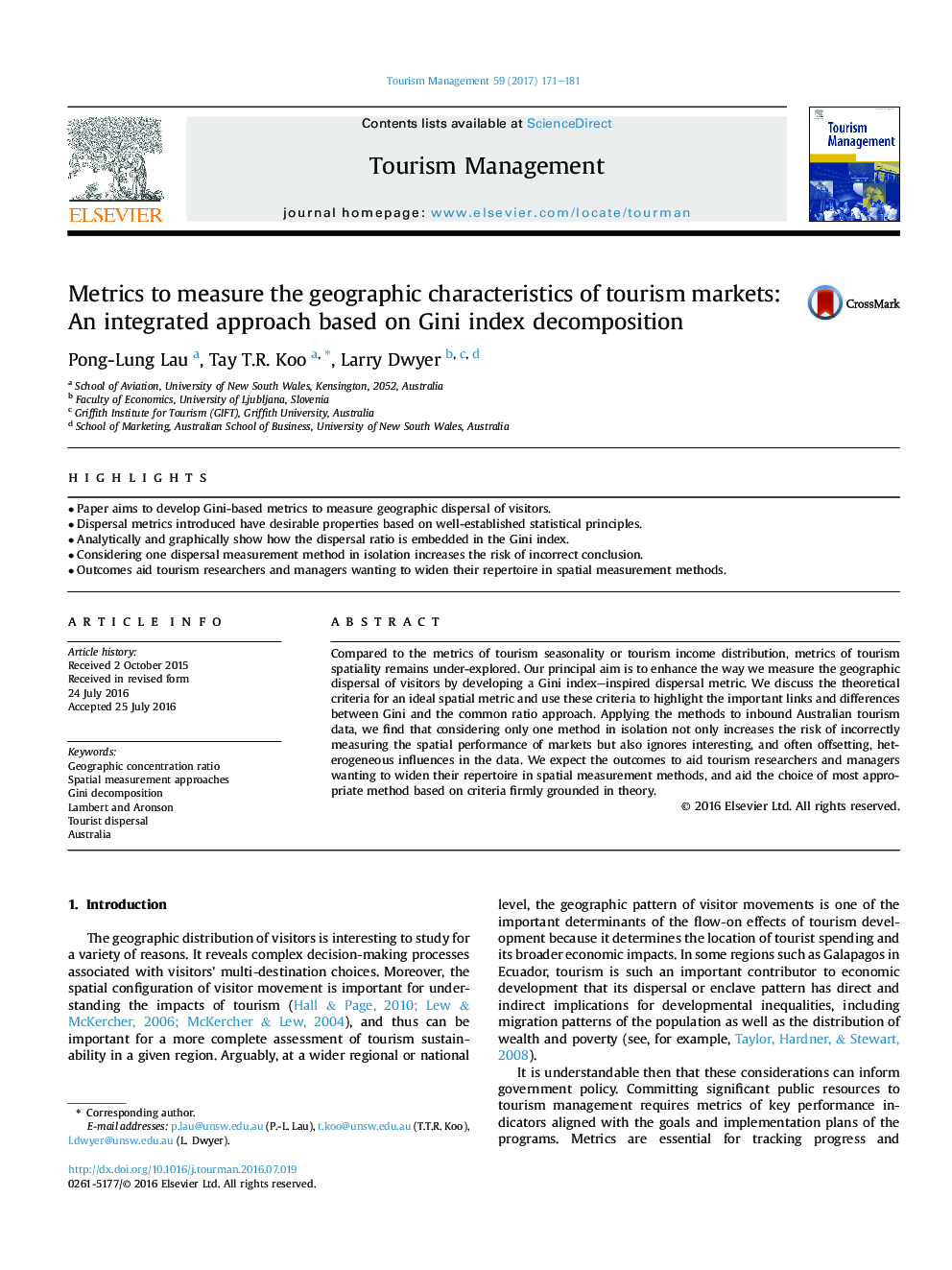| Article ID | Journal | Published Year | Pages | File Type |
|---|---|---|---|---|
| 1011809 | Tourism Management | 2017 | 11 Pages |
•Paper aims to develop Gini-based metrics to measure geographic dispersal of visitors.•Dispersal metrics introduced have desirable properties based on well-established statistical principles.•Analytically and graphically show how the dispersal ratio is embedded in the Gini index.•Considering one dispersal measurement method in isolation increases the risk of incorrect conclusion.•Outcomes aid tourism researchers and managers wanting to widen their repertoire in spatial measurement methods.
Compared to the metrics of tourism seasonality or tourism income distribution, metrics of tourism spatiality remains under-explored. Our principal aim is to enhance the way we measure the geographic dispersal of visitors by developing a Gini index–inspired dispersal metric. We discuss the theoretical criteria for an ideal spatial metric and use these criteria to highlight the important links and differences between Gini and the common ratio approach. Applying the methods to inbound Australian tourism data, we find that considering only one method in isolation not only increases the risk of incorrectly measuring the spatial performance of markets but also ignores interesting, and often offsetting, heterogeneous influences in the data. We expect the outcomes to aid tourism researchers and managers wanting to widen their repertoire in spatial measurement methods, and aid the choice of most appropriate method based on criteria firmly grounded in theory.
